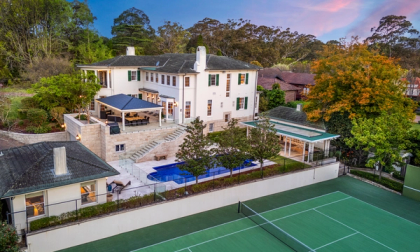
Why this could be the best time to buy your next home
You don’t have to follow the media too closely to know that Sydney property prices have fallen.
In fact, according to recent CoreLogic data, the city-wide median value has already slipped -7.4% since January this year.
But it’s often at times like this, in a slower or even declining market, that it makes sense to make your next real estate move. Here are six reasons to buy property right now on Sydney’s Upper North Shore.
1. You’ll have greater choice and more time
There are fewer active buyers in the market right now than there were at the market peak. However, the number of properties for sale has remained relatively stable, according to SQM data. That means less competition and, most importantly, greater choice. This stands in contrast to 2021 when prices were running away rapidly and properties often sold before potential buyers even had the opportunity to inspect them. Back then, buyers had to commit early and often found they needed to pay above the odds to secure property.
CoreLogic data shows Sydney’s median days on market has now lengthened from just three and a half weeks, or 25 days in 2021, to 37 days by August 2022.
While quality properties are still selling well, you’re likely to have more time to consider your options and find the perfect place for your next move. You’re also more likely to be able to negotiate a good price when you do find the home of your dreams.
2. You may have a smaller mortgage
If you already own property and want something bigger, it usually makes sense to upsize in a slow or falling market rather than a hot one. That’s because the gap in property prices shrinks, especially if price falls happen across the board.
For example, if the home you currently own is worth $1.5 million and the home you want to move into is worth $2.5 million, that’s a gap of $1 million that you’ll need to finance.
If, however, the price of both properties falls by 15%, the home you’re currently in is now worth $1,275,000, but the home you’re looking at buying is now worth $2,125,000: a gap of $850,000, or $150,000 less.
And that’s not the only saving you’ll make either. Your stamp duty bill could also come down too, as the tables below show.
3. You will have locked in most of the gains from 2021
While this market may be great news for upsizers, downsizers should also remember that they have still locked in most of the gains from 2021. After all, the median house value across Sydney rose 25.3% last year, according to CoreLogic. That makes this year’s falls small by comparison.
If you’re selling a family home to buy into an apartment, you should also take heart from the fact that the gap between house prices and apartment prices is as wide as it has ever been. That should mean more money left over for other things.
4. Interest rate rises may be stabilising
Interest rate rises have probably been the main factor behind falling prices. The RBA has lifted the official cash rate every month for the last five months, taking it from a record low of 0.1% to today’s rate of 2.35%.
We’ve noticed that this has caused a lot of would-be buyers to hold off on their purchase – not necessarily because they can’t afford their move, but because they’re unsure exactly where interest rates will land.
Our view is that when the RBA stops raising rates or even reduces their size or frequency, we’re likely to see more buyers enter the market. This will mean more competition for properties and potentially a rebound in prices. Our advice is to consider getting into the market before this happens.
5. Government incentives could be more likely to apply
For some time, the major challenge for first home buyers has been saving a deposit and covering the cost of stamp duty. While they’ve technically had the benefit of government incentives to help them overcome this, the reality has been that low upper-value thresholds mean few properties in our area have qualified for them, and rising prices quickly surpassed them if they did.
Stabilising prices mean that rather than grants becoming out of reach as prices rise, a range of properties now meet the criteria for these schemes.
For instance, the First Home Owner Grant (New Homes) Scheme’s threshold of $750,000 more than covers the median two-bedroom apartment value in Hornsby ($680,000). With no stamp duty payable at all on properties up to $650,000 and then a reduced rate up to $800,000, first-home buyers can potentially get into the market more easily than at any time in recent history.
Both the State and Federal Government have also introduced a raft of new initiatives in 2022 to help more buyers enter the market.
6. Trying to time the market is usually pointless
Finally, it’s worth remembering that buying property is usually a long-term proposition. Despite any short-term falls, the trajectory of the Upper North Shore property market is usually upwards. In fact, one study found that in the 25 years to April 2018, the median rate of growth in Sydney house prices was 7.6%. In established parts of our city, like the Upper North Shore, the rate is often higher still.
Rather than trying to time the market, you’re better off buying at a time that suits you. And, given current market conditions, for many, that could be right now.
Want more?
If you’re interested in finding out more about the property market in Ku-ring-gai or Hornsby Shire, get in touch.
Was this content helpful to you?





